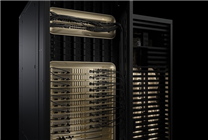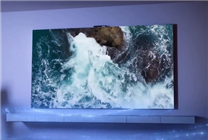The Rising Costs of AI Server Cooling Solutions
Key Takeaways:
- AI chips are increasingly powerful, leading to higher power consumption and cooling requirements.
- Upcoming server models, like NVIDIA’s Vera Rubin NVL144, will see substantial increases in cooling system costs.
- The demand for innovative cooling technologies is escalating due to enhancements in GPU and CPU power consumption.
In the evolving landscape of artificial intelligence (AI), the demand for powerful computing solutions continues to surge. Microsoft CEO Satya Nadella recently highlighted a pressing concern: the power supply struggles to keep pace with advancements in AI chip technology. As these chips become "hungrier" for power, cooling systems designed to manage their heat output are facing dramatic cost escalations.
Financial Implications of AI Cooling Systems
A recent report from Morgan Stanley critically examines the financial implications of these advanced cooling solutions, particularly focusing on the NVIDIA Blackwell Ultra GB300 NVL72 rack-mounted AI server system. The liquid cooling system for this model alone is priced at approximately $49,860, which is about 20% higher than its predecessor, the GB200 NVL72.
The upward trend in cooling costs is not expected to plateau anytime soon. For instance, projections indicate that the cooling component for the next generation Vera Rubin NVL144 server will rise to $55,170, reflecting an additional 17% cost increase. This could bring overall costs to nearly RMB 400,000.
Understanding Power Consumption Metrics
The GB300 NVL72 server comprises 18 computing trays, each GPU consuming around 1,400W. As a result, a single computing tray requires a minimum of 6,600W in power, necessitating liquid cooling with a capacity of 6,200W. The investment in cooling technology for each tray comes to about $2,260, accumulating to approximately $40,680 for all trays. Furthermore, the accompanying NVSwitch switch trays add an additional $9,180 to the overall liquid cooling system, largely due to the high-performance cooling plates tailored for GPUs and CPUs.
Anticipated Trends in Cooling Technology
Morgan Stanley’s findings project that the upcoming Vera CPU and Rubin GPU will exhibit even greater power consumption. The GPU alone is forecasted to draw up to 1,800W, which significantly impacts cooling requirements. The cost for cooling each computing tray is expected to increase by 18%, with specialized cold plates reaching $400 each. However, there is a silver lining—cooling costs for switch trays are anticipated to decrease by around 15%, amounting to $870 each.
Future systems may require even more sophisticated cooling solutions. For instance, the next iteration of the Rubin Ultra will feature four computing modules and 16 HBM4E memory modules within each GPU package. Thermal design power is anticipated to escalate to 3,600W, necessitating either advanced liquid cooling plates or immersion cooling technologies.
The Road Ahead for NVIDIA’s Technological Innovations
In response to the growing demand for computational power, NVIDIA is developing a new NVL576 rack solution. This ambitious setup will support up to 144 GPUs, effectively doubling the current processing capacity. Naturally, the integration of more components will further inflate cooling costs, raising the stakes for innovation in thermal management.
Conclusion: Embracing Adaptability in Cooling Solutions
The future of AI processing is heavily intertwined with the capabilities of its cooling systems. As chips demand more power and efficiency from their cooling infrastructure, organizations must acknowledge the financial and operational shifts required to sustain this technological evolution.
By focusing on cutting-edge cooling technologies and embracing a proactive approach, businesses can better position themselves to harness the full potential of AI advancements. With the industry on the cusp of major breakthroughs, staying informed about these trends will be crucial for stakeholders looking to compete in the AI space.





